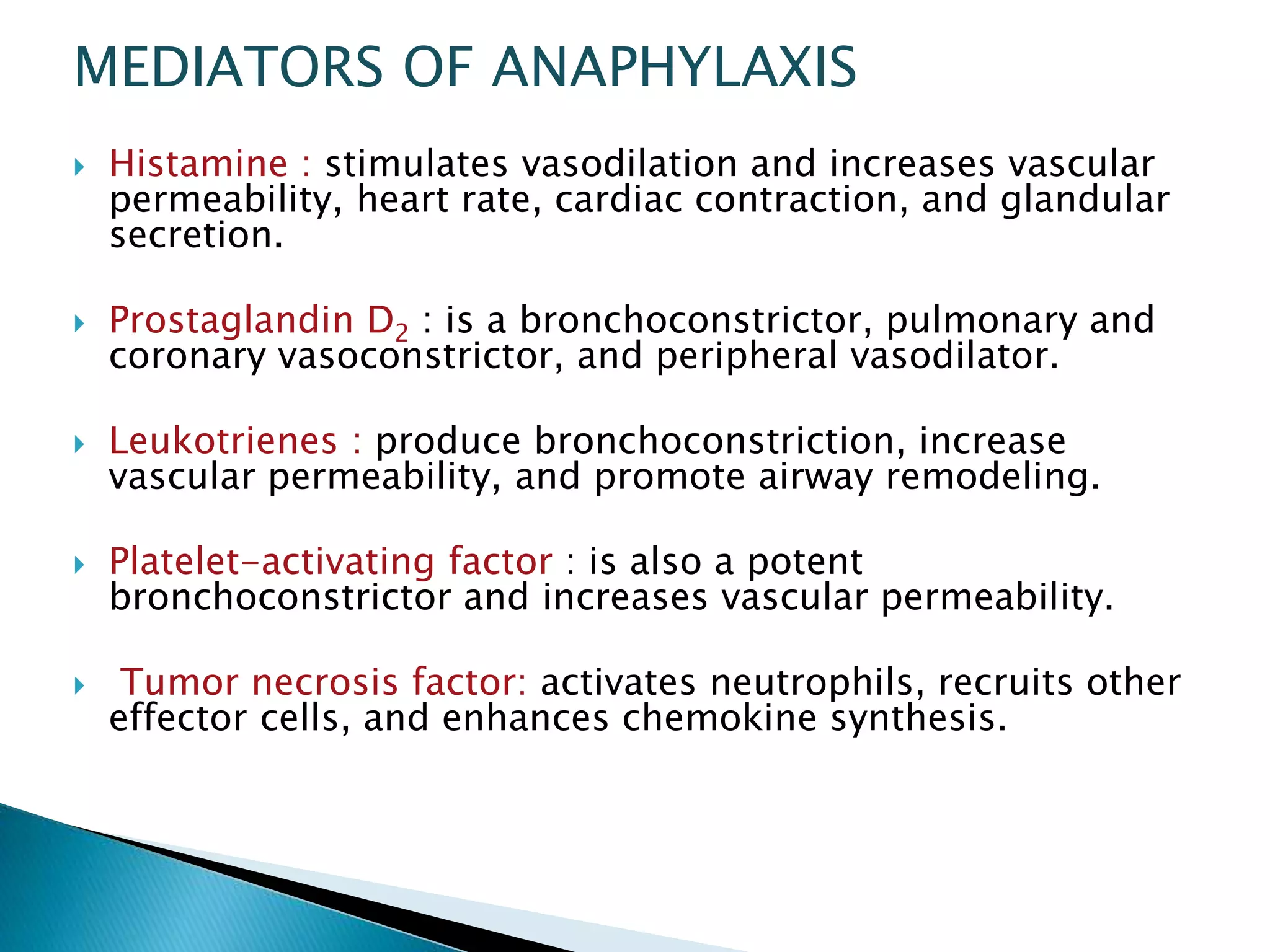This document provides information on anaphylaxis including its definition, clinical criteria, causes, pathophysiology, clinical features, diagnosis, differential diagnosis, and management. Anaphylaxis is defined as a serious allergic reaction that is rapid in onset and can cause death. It is caused by exposure to an allergen in sensitized individuals and involves the release of mediators from mast cells and basophils like histamine. Symptoms may include skin issues, low blood pressure, respiratory distress, and gastrointestinal symptoms. Epinephrine is the first line treatment to reverse its effects.
































